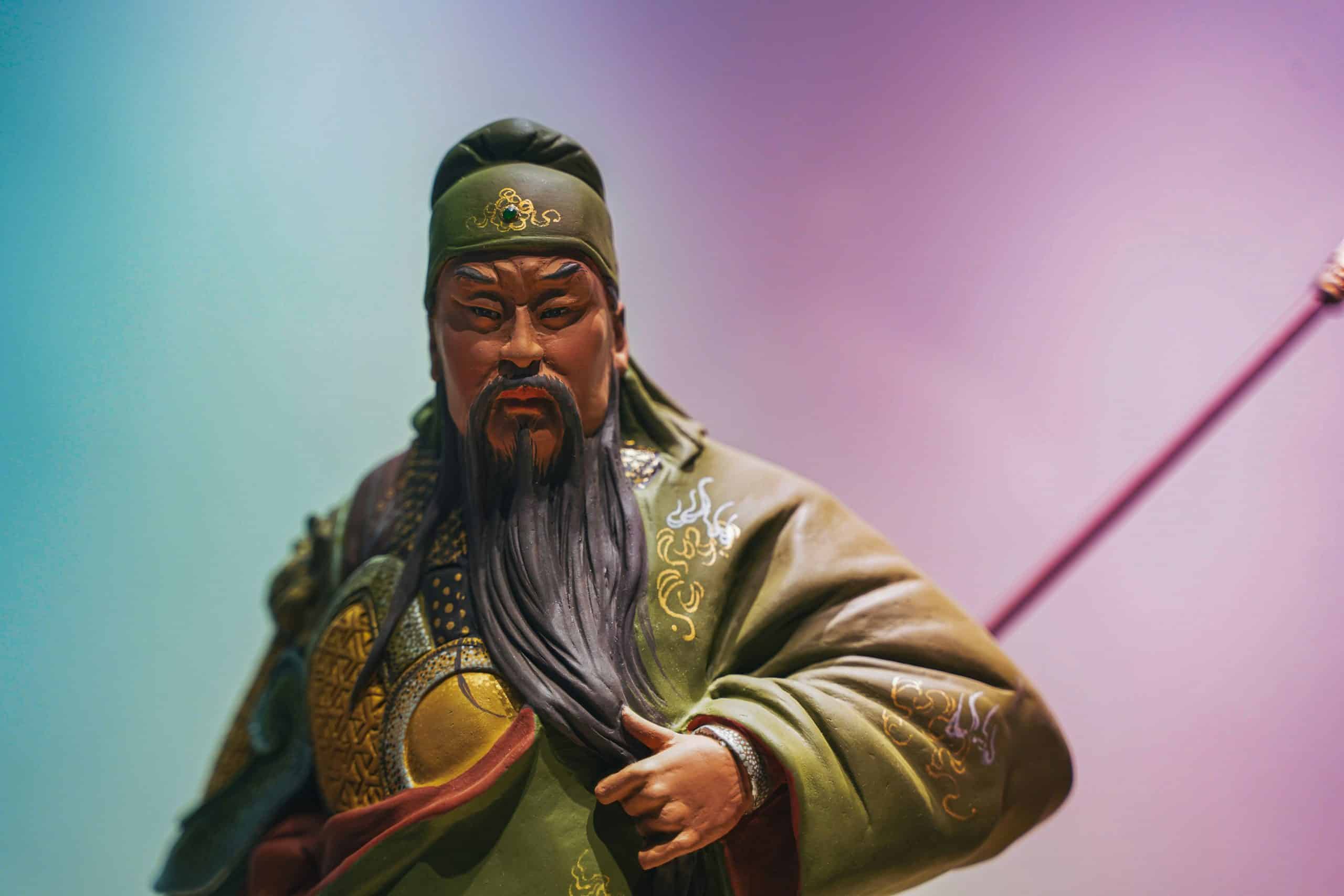Genghis Khan: The Mongol Empire Builder Who Changed History
Honestly, I’ve always been fascinated by figures who completely reshape the world during their lifetime. Genghis Khan—born Temüjin around 1162—represents one of history’s most complex and transformative leaders1. While many view him through the lens of conquest and destruction, the reality is far more nuanced. His story isn’t just about military might; it’s about a man who fundamentally changed how societies connected, traded, and understood each other across vast distances.
What strikes me most about studying Genghis Khan is how his early life shaped everything that followed. Born into a world of constant tribal warfare on the Mongolian steppes, Temüjin experienced poverty, betrayal, and survival challenges that would have broken most people2. His father, Yesügei, was poisoned by rival Tatars when Temüjin was just nine years old. Can you imagine? A child thrust into a hostile world where survival meant everything.
Mongolia Today
Modern Mongolia covers approximately 1.56 million square kilometers, making it the world’s second-largest landlocked country. Interestingly, its current population of about 3.3 million people is still largely nomadic or semi-nomadic, maintaining cultural traditions that would have been familiar to Genghis Khan nearly 800 years ago.
The transformation from Temüjin to Genghis Khan wasn’t instantaneous—it took decades of struggle, alliance-building, and what I can only describe as remarkable strategic thinking. According to historical accounts, he spent years as a captive, escaped, and gradually built a network of loyal followers who saw something extraordinary in this young man3. What really gets me is how he learned to unite traditionally feuding tribes through a combination of military prowess, political acumen, and genuine leadership innovation.
Now, I’ll be completely honest—that quote makes me uncomfortable, and it should. It reflects the brutal realities of 13th-century warfare and conquest. But here’s what I find fascinating: this same man also established religious tolerance, created meritocratic systems, and built trade networks that connected East and West in unprecedented ways4. It’s this complexity that makes Genghis Khan such a compelling historical figure.
From Temüjin to Khan: The Making of a Legend
The Mongolia of Temüjin’s youth was a harsh, unforgiving landscape where survival required constant vigilance. Tribal alliances shifted like sand, and resources were scarce. What I find remarkable is how these early experiences shaped his later innovations in military organization and governance. Having experienced betrayal firsthand—his own tribe abandoned his family after his father’s death—Temüjin understood that traditional kinship bonds weren’t always reliable5.
This insight would later influence his revolutionary approach to military and administrative organization. Rather than relying solely on blood relations, he promoted individuals based on merit and loyalty. Pretty radical thinking for the 12th century, wouldn’t you say? His childhood friend Jamukha, who would later become his greatest rival, taught him valuable lessons about leadership and the dangers of divided loyalties.
Military Genius and Tribal Unification
Here’s where things get really interesting. Temüjin’s rise to power wasn’t just about brute force—though he certainly wasn’t lacking in that department. What sets him apart from other conquerors is his ability to innovate and adapt. The guy basically revolutionized steppe warfare through a combination of traditional Mongol tactics and strategic innovations that no one saw coming6.
Key Military Innovations
Genghis Khan’s military success stemmed from several groundbreaking tactical and organizational innovations that transformed nomadic warfare into a precision instrument of conquest.
| Innovation | Description | Impact |
|---|---|---|
| Decimal System | Organized armies in units of 10, 100, 1,000, and 10,000 | Improved command structure and coordination |
| Composite Bow | Enhanced traditional bows with greater range and power | Effective range up to 350 meters |
| Psychological Warfare | Strategic use of terror and reputation | Many cities surrendered without fighting |
| Intelligence Networks | Extensive spy systems and information gathering | Superior battlefield awareness |
What really strikes me about his military philosophy is how it combined traditional Mongol mobility with systematic organization. I mean, think about it—these were nomadic peoples who had been fighting clan-based conflicts for generations. Suddenly, Temüjin comes along and says, “Hey, let’s organize everyone into units of ten thousand, promote based on ability rather than birth, and create a professional military structure.” That’s honestly revolutionary thinking7.
The unification of the Mongol tribes wasn’t just military conquest—it was cultural and psychological transformation. Temüjin understood that lasting unity required more than fear; it required shared identity and mutual benefit. By 1206, when he was proclaimed Genghis Khan (meaning “universal ruler”), he had created something unprecedented: a unified Mongol nation with a common purpose and shared destiny8.
Now, I have to pause here and acknowledge something that makes me uncomfortable as a modern reader. The Mongol conquests were incredibly brutal by today’s standards. Cities that resisted were often completely destroyed, populations were displaced or killed, and the psychological trauma was immense. Recent scholarship suggests that the Mongol invasions may have reduced global population by as much as 11%9. We can’t romanticize this history.
But—and this is where historical analysis gets complicated—the same military machine that caused such destruction also created unprecedented opportunities for cultural exchange, trade, and technological advancement. The Mongols were remarkably adaptable, adopting local customs and integrating conquered peoples into their administrative systems rather than simply destroying everything they encountered.
- Promoted religious tolerance throughout the empire
- Established the Silk Road’s most prosperous period
- Created the first international postal system (Yam)
- Facilitated technological transfer between East and West
- Implemented meritocratic administrative systems
What fascinates me most is how Genghis Khan balanced brutality with pragmatism. He wasn’t just a destroyer—he was a builder who understood that lasting empire required more than conquest. His legal code, the Yassa, established principles of governance that would influence Mongol administration for centuries10.

Building the Largest Contiguous Empire
Okay, let’s talk about scale for a moment. The Mongol Empire at its height covered roughly 24 million square kilometers—that’s about 16% of the entire world’s land area11. To put that in perspective, it stretched from Eastern Europe to the Pacific Ocean, encompassing parts of modern-day China, Russia, Central Asia, the Middle East, and Eastern Europe. Honestly, when I first learned these numbers, I had to double-check them. It’s almost incomprehensible.
What makes this expansion even more remarkable is the speed at which it happened. Within just a few decades, Genghis Khan and his successors had conquered more territory than the Roman Empire accumulated over centuries. But here’s what really gets me—this wasn’t just mindless expansion. There was method to the madness, strategic thinking that reveals sophisticated understanding of geopolitics, economics, and cultural dynamics.
The Mongol Expansion Strategy
Genghis Khan’s empire-building followed a remarkably consistent pattern that combined military innovation with psychological warfare and adaptive governance. Each conquest built upon previous successes while incorporating local knowledge and expertise.
The conquest of the Western Xia and Jin dynasties in northern China taught the Mongols valuable lessons about siege warfare and administrative complexity. I find it fascinating how they adapted their traditional nomadic tactics to overcome fortified cities and manage sedentary populations. They weren’t just conquerors—they were learners, constantly evolving their methods based on new challenges and opportunities12.
- Intelligence gathering through extensive spy networks
- Psychological warfare to encourage surrender
- Rapid military campaigns with multiple coordinated armies
- Integration of conquered peoples and their technologies
- Establishment of administrative systems adapted to local conditions
What really strikes me about the Mongol approach is how they managed to maintain cultural cohesion across such vast distances and diverse populations. The Pax Mongolica—the Mongol Peace—created unprecedented opportunities for cultural and technological exchange. Imagine traders traveling safely from Venice to Beijing, scholars sharing knowledge across continents, and technologies spreading faster than ever before in human history13.
Again, I have to acknowledge the darker side of these conquests. The destruction of Baghdad in 1258 under Hulagu Khan, Genghis Khan’s grandson, ended the Islamic Golden Age and destroyed centuries of accumulated knowledge. The House of Wisdom, with its vast libraries and scholarly traditions, was obliterated. When I read about these losses, I genuinely feel a sense of grief for what humanity lost during these campaigns.
Yet—and this is where historical analysis requires nuance—the Mongols also preserved and transmitted knowledge in ways that might not have happened otherwise. They were remarkably pragmatic about adopting useful technologies, administrative practices, and cultural innovations from conquered peoples. Chinese printing technology, Islamic mathematical concepts, and Persian administrative systems all spread throughout the empire14.
The religious tolerance practiced throughout the Mongol Empire was extraordinary for its time. Christians, Muslims, Buddhists, and traditional shamanists coexisted within the same administrative framework. Genghis Khan himself consulted with religious leaders from various traditions, apparently genuinely curious about different spiritual perspectives. This wasn’t just political pragmatism—though it certainly served political purposes—but seemed to reflect a genuine intellectual openness that’s quite remarkable.
Trade flourished under Mongol rule in ways that wouldn’t be seen again until the modern era. The Silk Road reached its peak during the Mongol period, with merchants enjoying unprecedented safety and standardized systems of exchange. Marco Polo’s famous journey was made possible by the infrastructure and security provided by Mongol administration15. Pretty amazing when you think about it.
Cultural Legacy and Modern Perspectives
So here’s where things get really complicated—and honestly, it’s where I sometimes struggle with how to present historical figures who had such enormous impact. Genghis Khan died in 1227, but his influence on world history extends far beyond his military conquests. We’re talking about genetic, cultural, linguistic, and technological impacts that continue to shape our world today.
From a genetic perspective, recent DNA studies suggest that approximately 16 million men alive today carry genetic markers linked to the Mongol expansion16. That’s roughly 0.5% of the global male population. Think about that for a moment—nearly 800 years later, the genetic impact of the Mongol Empire is still measurable in modern populations. It’s simultaneously fascinating and deeply troubling when you consider what it represents.
In Mongolia today, Genghis Khan is viewed quite differently than in many other parts of the world. He’s a national hero, a symbol of Mongol independence and cultural pride. The main airport in Ulaanbaatar is named after him, his image appears on currency, and his story is taught as foundational to Mongol identity. Having never visited Mongolia myself, I can only imagine how complex it must be to navigate these different historical perspectives.
What really gets me thinking is how our understanding of Genghis Khan has evolved over time. Medieval European chronicles painted him as a demonic figure, the “Scourge of God” sent to punish Christian nations. Islamic historians focused on the destruction of Baghdad and other cultural centers. Chinese sources emphasized the foreign nature of Mongol rule and its eventual overthrow.
But modern scholarship—and I’m thinking particularly of historians like Timothy May and Peter Jackson—has revealed a more nuanced picture17. We now understand that Mongol administration was often more sophisticated and tolerant than previously believed. The empire’s impact on trade, technology transfer, and cultural exchange was genuinely transformative for global civilization.
Lasting Innovations
Many systems and concepts we take for granted today can trace their origins to Mongol administrative innovations: international postal services, diplomatic immunity, religious tolerance policies, and meritocratic governance principles.
The environmental impact of the Mongol conquests is something that’s only recently been studied seriously. Some researchers suggest that the population decline caused by Mongol invasions may have led to reforestation and temporary reduction in atmospheric carbon dioxide levels18. It’s a sobering reminder of how human conflict and demographic change can have planetary-scale consequences.
As I wrap up this exploration of Genghis Khan’s life and legacy, I’m struck by how his story challenges us to think about historical complexity. He wasn’t simply a villain or a hero—he was a human being who lived in a particular time and place, responding to specific circumstances and opportunities. His actions had consequences that rippled across centuries and continents.
What I find most valuable about studying figures like Genghis Khan is how they force us to confront difficult questions about power, progress, and human nature. Can we acknowledge the cultural and technological advances that emerged from the Mongol Empire while also recognizing the human cost of those achievements? How do we balance historical understanding with moral judgment? These aren’t easy questions, and I don’t think they have simple answers.
The story of Genghis Khan ultimately reminds us that history is messy, complicated, and often morally ambiguous. But it’s precisely this complexity that makes it so important to study and understand. His legacy—both positive and negative—continues to shape our world in ways we’re still discovering.
References


